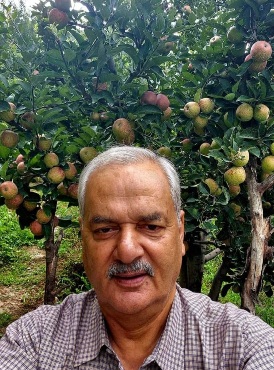Nurturing Legacy: My Journey in Apple Orchards
I've been deeply rooted in apple cultivation since 1952, a tradition started by my parents.
We’ve upheld a 30:70 ratio of color to bloom (C/B) with our cherished Royal Delicious variety, maintaining the old, traditional practices.
Unlike many modern growers, I limit chemical sprays to just 3-4 times a year, focusing on Bordeaux mixture and winter oil sprays.
Bordeaux mixture, my steadfast recommendation, acts as a robust anti-fungal, anti-bacterial, and anti-viral agent. It’s also a prime source of copper, promoting vibrant photosynthesis throughout the growing season.
Zinc, often deficient in our soils, is another crucial element I ensure to apply.
This season, I’ve completed three calcium sprays, alongside my trusted fungicides: dodine with emulsifier, systhane, contaf, and carbendazim—favorites I've tested since my doctorate in 1985.
Root rot disease remains a formidable challenge, with no surefire management in sight.
To combat this, I deploy beehives at 10% flowering for effective pollination and keep my orchard floor weed-free to minimize disease and pest risks while reducing nutrient competition.
Since retiring in 2019, I’ve dedicated myself full-time to my orchards, living amongst my trees and milking cows.
Weather monitoring and simulation have become key tools, allowing me to cut down on unnecessary sprays.
This scientific approach, combined with my extensive experience—including post-doctorate work at East Malling, UK, and expertise in 13 other countries—has earned me a gold medal and three lifetime achievement awards at the national level.
Yet, despite our best efforts, the future of apple growing is fraught with challenges as natural supports dwindle each year.
Maintaining a healthy, productive orchard requires relentless innovation and dedication, a legacy I am determined to uphold.




